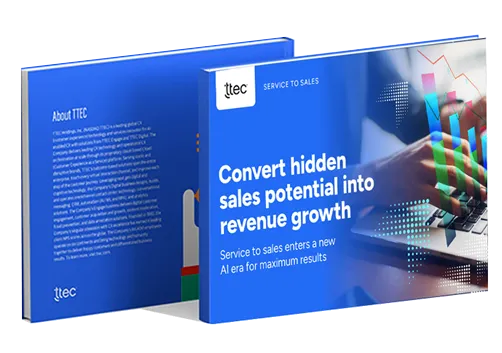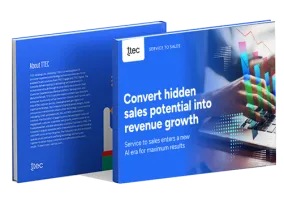When a new market opens, some companies will rush in with short-term growth strategies no matter the product or service on offer. This was not the case with Yapi Kredi Emeklilik. The Turkish financial services company, which offers private pension plans and insurance products, knows its customers are planning for their future. So when it first entered the private pension market, the company decided to focus on its customers’ long-term needs and value, from acquisition to retention.
“It’s a long-term business,” says Bulent Eris, vice president of marketing, research & development, and risk management at Yapi Kredi Emeklilik, a division of Fortune 500 business conglomerate Koç. “People are more willing to invest in short-term investments, so we have to be customer-focused from the beginning.”
Getting it right from the start
The private pension sector is a burgeoning one in Turkey. Regulations opened up the market six years ago. Yapi Kredi Emeklilik was named one of the first companies in Turkey to receive a private pension convergence license.
Being a relatively new market, there are many new products, and customers need to be educated about what’s right for them. Yapi Kredi Emeklilik aimed to grow its business by being a resource for its customers. That meant understanding their needs. With a new market and new customer base, the company decided to use its deep analytical capabilities and comprehensive customer database to develop its customer-centric growth plan. The goal was to increase sales and retention rates while building stronger relationships. Instead of an aggressive customer acquisition plan, the company focused on building the value of existing customers. “Segmentation and embedded churn management would be very useful financially,” Eris says.
Segmentation drives retention
So, in 2007 Yapi Kredi Emeklilik shifted its segmentation strategy from products and demographics to differentiated treatment strategies in all customer-facing channels, based on needs, value, and behavior. Yapi Kredi Emeklilik worked with Peppers & Rogers Group to segment its customers, define segment strategies, and build churn analysis and prediction models. Customers are now placed into one of four value, 23 behavior, 16 needs, and nine integrated segments. The two companies also defined a roadmap to manage the implementation and business results of the segmentation, churn models, and supporting strategies. The strategies have been rolled out within Yapi Kredi Emeklilik’s marketing, sales, and service organizations.
The marketing department in particular realigned its role to focus mainly on segmentation initiatives, and churn initiatives were moved to the top of the organizational agenda. For example, the company identified its most valuable customers, and sent individual account managers on personal visits to each MVC. The purpose of the visit was not to sell, but to build the relationship. The account manager answered any questions and helped customers with any issues related to their account or to the private pension market in general. They also provided their direct contact information for future interactions. As a result, churn rates among MVCs have declined by 50 percent, Eris says.
In addition, the company created 52 potential customer groups, such as “risk lover” and “family-oriented,” and designed a call center treatment strategy for each group. When a risk-lover customer calls, for example, he will get detailed information about different funds available, while a family-oriented customer can learn about the long-term benefits of the products she has selected, without as much complex financial detail.
Yapi Kredi Emeklilik also began offering two targeted, opt-in customer newsletters: one focused on specific financial details, and one focused on lifestyle and product information. Customers receive one or the other depending on their segment. Specific sections of the newsletter, such as fund performance in the financial publication, have click-through rates more than three times higher than the previous general newsletter, says Gulin Ofluoglu, manager of direct marketing and segment management.
“We are giving people more detailed information specific to their needs,” Eris adds. “It’s about educating customers from the first touch through the duration of the relationship.”
Another essential element of Yapi Kredi Emeklilik’s customer relationship strategy is churn management. There are two types of churn among the company’s customer base: those who take their money out of their accounts, and those who stop contributing. The company wanted to curtail both, Ofluoglu says. “It was important for us to know when they showed some signs of leaving,” she says.
Before the segmentation plan, the company used some reactive campaigns, with limited success. Now it is more proactive with those deemed vulnerable to churn. For example, the marketing team created campaigns specifically targeted to customers with high churn scores. The messaging encouraged them to stay with Yapi Kredi Emeklilik for 24 months. Of those who agreed, the churn rate decreased by 81 percent. “Proactive interaction is key,” Ofluoglu says.
As part of its transformation, Yapi Kredi Emeklilik worked with Peppers & Rogers Group to establish and run a project management office (PMO) to support the implementation of the segmentation roadmap. The PMO played an advisory role to the project teams on topics such as campaign design and implementation, segment-based communication, and proactive retention progams.
Yapi Kredi Emeklilik also collaborated with Peppers & Rogers Group to define a long-term customer data strategy. This included defining ideal data sets, along with rules and standards; performing analytical and empirical data quality analysis; presenting improvement opportunities in customer data collection forms and processes (e.g., incomplete data fields, data ownership, and management processes); defining data collection maps by data field, segment, and channel; and defining data quality metrics, methodology, and actions. It also included the data strategy initiatives roadmap Yapi Kredi Emeklilik would use as a guideline.
Moving forward
With new insight and programs in place, Yapi Kredi Emeklilik delivered segment-based marketing campaigns and proactive retention efforts with effective results. Ofluoglu says that customers’ personal savings rates are now higher without any new budget investments. Additionally, targeted retention campaigns are having the desired effect. The company achieved a 41 percent acceptance rate for one recent proactive retention offer, and a 40 percent lower churn rate within two months for the target group compared to the control group.
Yapi Kredi Emeklilik is building on its customer strategy success. Eris says the company plans to extend its customer initiatives further into the sales process, direct marketing initiatives, and the CRM infrastructure, allowing for more relevant cross-selling and after-sale efforts. The key to that success will be the enhancement of the data and segmentation strategies that have been working so well. “Customer needs and behavior information help with every aspect of the relationship,” Eris says.















